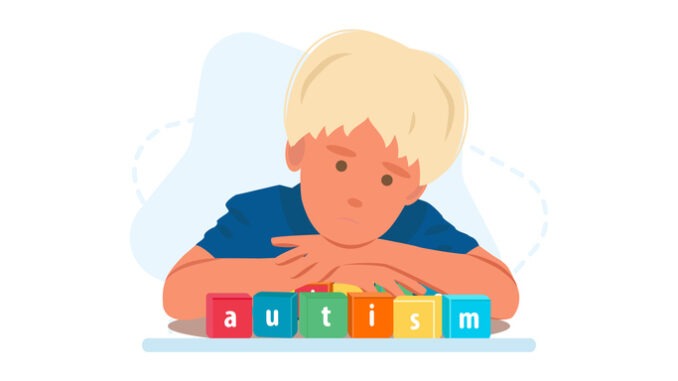
Dr Paul Lambden explains what Autism Specturm Disorder is and how it is diagnosed
Autism and Asperger’s Syndrome, collectively known as Autism Spectrum Disorder (ASD), is a developmental disorder which affects an individual’s development in terms of their communication and behaviour. Although it may be diagnosed at any stage in life, the term ‘developmental’ is used to describe it because the greatest number of cases occur in the first two years of life.
People with ASD are diagnosed if they display the following features:
- Difficulty with relationships, interaction with others and communication.
- Limited interests with focus on specific areas intensively.
- Repetitive behaviours.
- Symptoms that conflict with the ability to act to a standard compatible with normal function in school or at work.
When making social communication or interaction the individual may display specific behavioural features, including:
- Difficulty interacting with conversation.
- Lack of eye contact.
- Displaying behaviour, such as gestures or facial expressions, which are not consistent with what is being said.
- Tending not to listen to what others are saying and struggling to understand another’s point of view.
- Showing lack of features of enjoyment .
- Speaking with an unusual tone of voice which may sound flat and unvarying, or sometimes having a sing-song character.
Repetitive behaviour may include:
- Echolalia – repeating words or phrases.
- Persistent interest in specific, often minor, detail.
- Disturbed sensitivity to stimuli such as light, sounds or temperature.
People with ASD may be easily upset by changes in routine and may also display irritability and struggle to sleep. Such people do, however, often display valuable characteristics
- They may excel in mathematics, science, art or music.
- They often have great capacity to learn and retain information.
The causes of ASD are not fully understood but a lot is known about the aetiology and genesis of the condition.
- One-in-100 children has ASD.
- Boys are diagnosed four times as often as girls.
- If a child has ASD there is a 10% chance that a sibling will also display features.
- ASD is more common in families where the parents were older at conception.
- If the mother has one of a range of medical issues, such as diabetes, during the pregnancy.
- Having a condition such as Down’s Syndrome or Rett’s syndrome may increase the possibility of ASD.
- Very low birth weight.
Some people with ASD may also have epilepsy, mental health problems and difficulty eating and with digestion.
The diagnosis of ASD in children is often made by identifying variations in behaviour and development. It is commonly the case that the parents notice such variations which are drawn to the attention of the monitoring healthcare professional. Screening should identify developmental delays and screeners may be alerted by awareness of the existence of one or more of the features listed above.
If the diagnosis is suspected the individual may go on to see a paediatrician, child psychologist or speech and language therapist, if communication is difficult. The child may be evaluated to assess cognitive ability and language skills and other causes of communication or learning difficulties, such as poor hearing and concomitant illness, may need to be excluded.
In older children and adolescents the symptoms and signs may be recognised both by parents and by members of the teaching staff. Features may include difficulty with humour, colloquialisms, speech or more subtle characteristics such as difficulty understanding body language. In such circumstances evaluation may occur by representatives of the school special education team. Diagnosis in older children and adolescents may be more difficult than in younger children because of complicating factors such as depression, anxiety or ADHD.
The condition cannot be ‘cured’ and it is important for close family to obtain support to help develop the individual’s behaviour and social skills and to help with communication skills. For children many such changes may be small and simple but can provide a more manageable environment. Such measures may include adjustments to lighting or sound control and the re-organision of domestic activities to help improve arrangements for meals and sleep. If there is challenging behaviour, this may be addressed by the creation of routines which may minimise their impact. Other supportive treatments may include speech and language therapy and physical therapies to assist in the development of co-ordination and movement.
For adults, and particularly for those where the identification is late, ensuring a full understanding of the ramifications of the diagnosis, supported by training, learning to cope and problem-solving, together with speech and language support if required, are essential.
The National Autistic Society provides a wealth of information and, as its website states, has been ‘transforming lives and changing attitudes since 1962’. This campaigning charity can be contacted as follows:
- Website: www.autism.org.uk
- Email: [email protected]
- Tel: 0808 800 1050
- General Enquiries 0207 833 2299

Be the first to comment